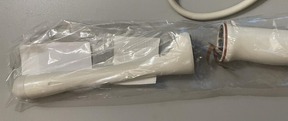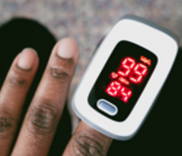|
 
December 2023
Volume 23, Issue 12
The U.S. Food and Drug Administration’s (FDA) MedSun program provides this monthly newsletter to inform patients and patient advocates about FDA-related information on a variety of topics, including new products the FDA has authorized for marketing, significant labeling changes, safety warnings, notices of upcoming public meetings, proposed regulatory guidances and opportunity to comment, and other information of interest to patients and patient advocates.
The MedSun program, launched in 2002 by the FDA’s Center for Devices and Radiological Health (CDRH), involves the reporting of problems with medical products from a network of approximately 300 hospitals, nursing homes, and home health facilities around the United States. MedSun sites work collaboratively with the FDA to assist in detecting, understanding, and sharing information concerning the safety of medical products. MedSun uses a secure, online reporting system for reporting problems with the use of medical devices and plays a critical role in the FDA’s postmarket surveillance efforts.
|
|
Letters to Health Care Providers |
|
|
The reports that follow represent a cross section of device related events sent by MedSun Representatives during the prior month. The reports are presented as submitted by MedSun Representatives and in some instances, have been summarized and edited for clarity.
|
|
Type: Humidifier, Respiratory Gas, (Direct Patient Interface)
Manufacturer: Vyaire Medical, Inc.
Brand: AirLife Bubble Humidifier W/6Psi Pressure Relief Valve
Model#: 002006
Lot#: 0004208007
Cat#: 002006
Event: Prior to removing the tube from the patient’s throatthe respiratory therapist was setting up oxygen to match what was on the ventilator. Shortly after, the safety pressure valve made a loud whistle sound. The respiratory therapist checked equipment and discovered there was a hole leading to the cannula to deliver oxygen. When staff grabbed a new device from the supply closet, they noted it had the same defect. We found a total of 11 devices with the same problem.

Type: Transducer, Ultrasonic, Diagnostic
Manufacturer: Philips Ultrasound Inc.
Brand: Transducer 3d9-3v
Model#: 989605395622
Lot#: B28BFQ
DI: 00884838061545
Event: The transvaginal probe broke in half as the sonographer was removing probe from a patient during a routine transvaginal exam. The sonographer notified Philips. This is the same problem as described in a large recall from this manufacturer for similar devices. However, this device model is not listed in the recall.
|
Type: Pump, Infusion
Manufacturer: Carefusion 303, Inc.
Brand: BD Alaris
Model#: 8100
DI: 10885403517723
Event: An IV bag with Levophed was infusing on an Alaris pump for blood pressure control. The IV drip was stopped and then turned off. The entire pump and all four channels were off. The peripheral Levophed bag began to free flow into the patient while the pump was turned off, still in the pump channel.
Type: General surgery tray
Manufacturer: Cardinal Health 200, LLC
Brand: Convertors
Model#: 9571
Lot#: 22BC7008
Ref#: 9571
DI: 0192253019032
Event: Surgical gowns allowed saline that had patient blood in it to leak through the gown just above both wrists. This is the second time this has occurred with this type/brand of gown. The gowns are AAMI level 3 and size 2XL.
Type: Transducer, Ultrasonic, Diagnostic
Manufacturer: Boston Scientific Corporation
Brand: Ultra ICE Plus
Model#: M00499120
Lot #: 31473584
DI: 08714729904380
Event: The ICE (intracardiac echocardiography) machine was registering the wrong ICE catheter. An ULTRA ICE was inserted, but the machine read a completely different catheter. We rebooted the machine, but it still did not recognize correct catheter. A new ICE catheter was connected and identified correctly on the machine.
|
|
Neonatal and Pediatric Reports |
|
 |
|
These reports describe medical device events involving neonatal or pediatric patients, or those events involving a medical device that is indicated for use in neonatal and pediatric patient populations.
The FDA defines pediatric patients as those who are 21 years of age or younger (that is, from birth through the twenty-first year of life, up to but not including the twenty-second birthday) at the time of the diagnosis or treatment.
|
Type: Oximeter
Manufacturer: Masimo Corporation
Brand: RD Set
Model#: 4478
Cat#: 4478
DI: 10843997013267
Event: The new Masimo RD Set O2 probes are constantly having the protective covering to the wire come undone and expose the wires requiring more frequent changes of the whole O2 saturation probe rather than just the sticker. We changed O2 saturation monitors vendors within the past few months. Since the change, registered nurses are noticing more of an issue with wire exposure and integrity, more frequent changing of the entire cord due to this and issues with the O2 saturation probes not picking up at times compared to the previous brand we used and requiring a change even if the cord is intact. Some of the new Masimo probes have exposed wires where the probe meets the main connecting wire.
The representative recommended that when we see wires becoming exposed, to replace it with a new saturation probe. The wires being exposed is not an immediate danger to the infants per the representative, rather more of a concern if the saturations are not picking up appropriately. At this time, saturation probes are not being refurbished, and are just discarded and replaced when wires become exposed.
There was no patient harm in this event.
Type: Pump, Infusion
Manufacturer: Carefusion 303, Inc.
Brand: BD Alaris
Model#: 8015, 8100 (x2)
Event: The TPN (total parenteral nutrition) infusion was set to run on a pump. The pump was programmed correctly. The neonate got a bolus of 38.4mL instead of 0.8mL/hour as programmed. The patient died.
|
|
Report on Cybersecurity Risks in Legacy Medical Devices

The FDA contracted with MITRE to develop the report, Next Steps Toward Managing Legacy Medical Device Cybersecurity Risks. Legacy medical devices are those that cannot be reasonably protected against current cybersecurity threats, and these devices can pose significant risks to the health care sector. Legacy devices were legally put on the market and may still be broadly in use. However, cybersecurity controls that may have been effective at their point of purchase may no longer be adequate now. Addressing this issue is complex and must be done in a way that minimizes negative impacts to patient care and safety. This publication outlines practical approaches and recommendations that build on previous work and can further drive sector-wide legacy device cyber risk management efforts.
|
New Cybersecurity Standard Receives FDA Recognition

The FDA recognized a key consensus standard to support device sponsors as they address cybersecurity concerns. The FDA encourages use of this new standard to enhance quality and support product performance: ANSI/AAMI SW96:2023 Standard for medical device security - Security risk management for device manufacturers. The standard applies to the Total Product Life Cycle.
|
Pulse Oximeters: New Initiatives on Accuracy

Through two new initiatives, the FDA is working to ensure pulse oximetry is equitable and accurate for all patients. The FDA encourages your participation in both activities.
|
|
|
Links to FDA CDRH Databases and Other Information Sources |
|
U.S. Food and Drug Administration
10903 New Hampshire Ave.
Silver Spring, MD 20993 |
|
|
|
|